Imagine the biggest pile of trash you’ve ever seen. It probably doesn’t even come close to Dandora. People are sifting through it – thousands of them –ceaselessly searching for the next piece of refuse they might be able to sell for a few shillings.
The mountains are constantly smouldering, sometimes bursting into all-out blazes under the scorching sun, spewing toxic plumes into the atmosphere. You feel it viscerally – the stench of trash in your nostrils, the corrosive smoke in the back of your throat.
It’s like this to the horizon on my left, and on my right is Korogocho slum. Tens of thousands of makeshift dwellings, made of crumbling concrete if you’re lucky, or rusting tin sheets if not.
And then, in the literal shadow of all this hardship, there’s laughter.
Children racing about. Footballs flying. Joyful chaos. Music, dance, art – all the things that make us human. And talent. So much unbelievable talent.
Such is the beauty of the Ayiera Initiative…
Hamilton Ayiera Nyanga – the organisation’s founder and director – grew up in Korogocho, and knows first hand the importance of developing the talents of the children who live there, and providing them with a solid foundation for education. Every child participating in the Ayiera Initiative’s programs is one less child being forced to scavenge at the nearby Dandora dumpsite, which represents the only source of livelihood for so many in the community.
The Ayiera Initiative is working tirelessly to provide opportunity and hope to thousands of disadvantaged children, and I hope you find their work as inspiring as I do.
Dandora Dumpsite
Dandora is the largest dumping site in Kenya, and one of the largest on the African continent. Every day, thousands of individuals make their way there in order to scavenge for food, and search for items that might be able to be resold.
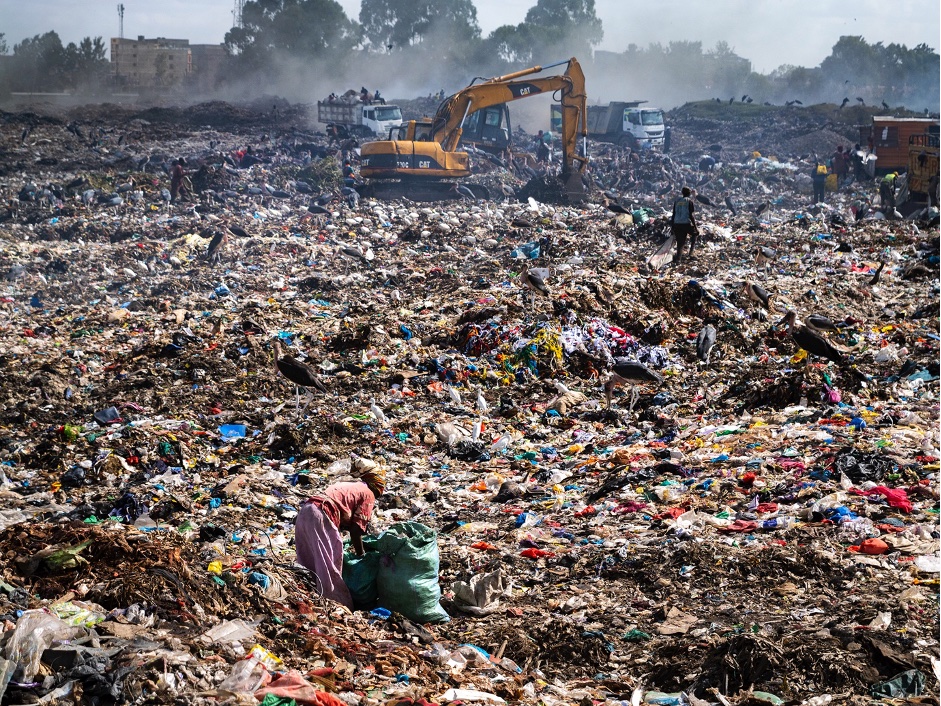
Children are scattered amongst them. I met one girl, who should’ve been in primary school, sifting through the waste. Her father had died, and her mother was at home sick. There was no money for food – let alone school fees – so she spent her days at Dandora.
Nearby, a 16-year-old boy tells me that his family recently moved to the north, but they couldn’t afford to take him with them, and so he’s resigned to the same fate as the young girl.
Dandora was one of the bleakest places I’ve ever visited, and I don’t think any photo or video can effectively convey the reality of it.
The day I spent there was one of the most challenging I’ve had, and amongst a range of conflicting emotions, I was left feeling struck by the importance of the Ayiera Initiative as a refuge for the children of Korogocho.
It’s a place where kids can be kids – and that in itself is special…
Hamilton Ayiera Nyanga
Born in Korogocho, Hamilton Ayiera Nyanga, grew up in extreme poverty. His parents scraped by on casual jobs, and managed to educate him through to the end of primary school. At this point, Hamilton was forced to leave school, and he turned to Dandora dumpsite for survival.
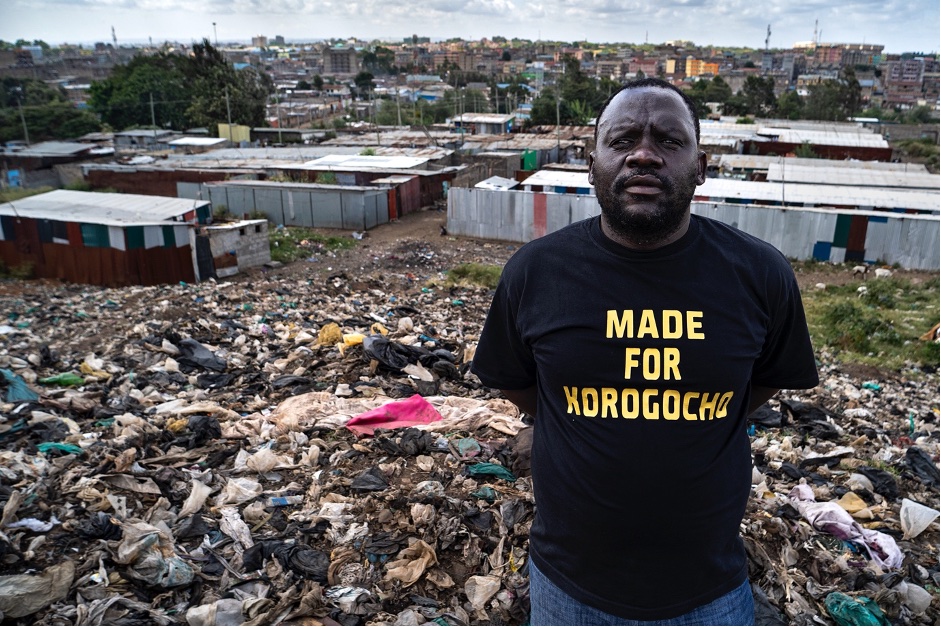
His years of scavenging have left him with a gum disease, and most of his teeth are now artificial. Alongside respiratory illnesses, it’s one of the most common health problems faced by those at Dandora.
Hamilton’s big break came in 2006, when he was invited to participate in the Homeless World Cup in Cape Town, South Africa. The Kenyan team won the cup, and Hamilton scored the winning penalty. He received a few hundred Euros for his efforts, and upon returning to Korogocho, he decided that he would invest the money back into his community.
Beginning with a few chairs in a tin shack, Hamilton has spent the last two decades building the Ayiera Initiative into an organisation that today serves over 4,000 children. They run educational classes, social events and talent programs – from football and dance, to modelling and art.
Ultimately, Hamilton hopes to be able to build a school, where he can offer primary and secondary education, free of charge, to all the children of Korogocho.
Social Events
It had been my plan to begin filming with the Ayiera Initiative in mid-January. However, when I first reached out to them, they told me that their biggest event of the year is held just before Christmas. It’s a huge celebration, featuring thousands of children and hundreds of performers – and I certainly wasn’t going to miss it.
The Destitute Children’s event is an annual showcase of the talents of Korogocho. There’s gymnasts and firebreathing, poetry and theatre, singing and dancing, and even a rapid-fire art competition. As the crowd builds throughout the day, the event culminates with the under 10, under 12 and under 14 football finals.
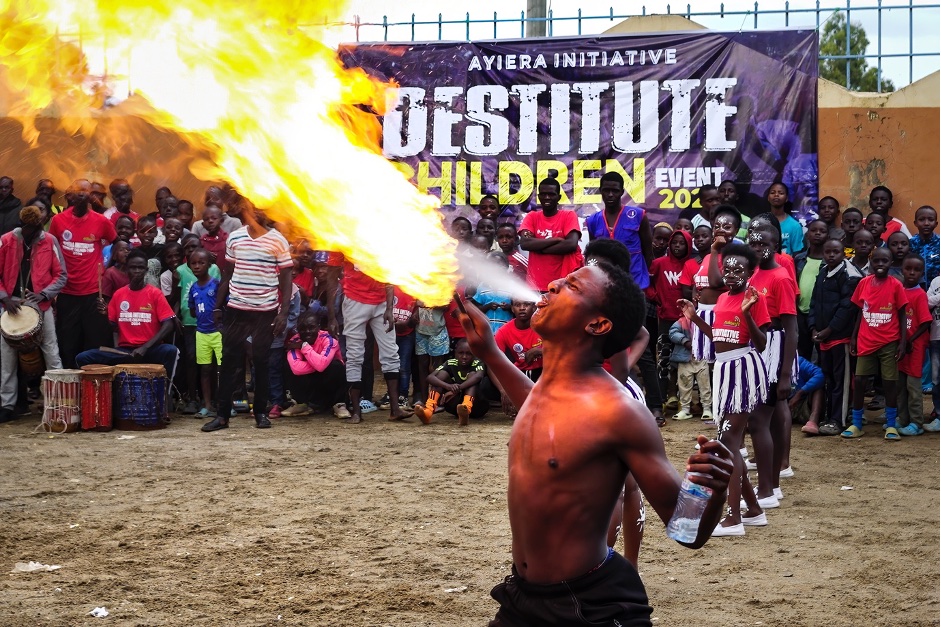
Throughout my life I’ve been lucky enough to watch some big matches around the world, and the atmosphere in Korogocho while those kids were playing would have rivalled any of them.
While the event is of course an opportunity for the children to show off their skills, it’s also so much more than that. For many people in Korogocho slum, Christmas is a particularly difficult time. Presents can be a pipe dream when you’re struggling to simply put food on the table.
So, more than anything else, the Ayiera Initiative’s end of year event is just a chance for the kids of Korogocho to let their hair down and have fun – and it’s absolutely wonderful.
Educational Classes
It’s Saturday morning, and seventy kids are packed into a classroom at the Ayiera Initiative’s centre in Korogocho. They’re learning about health and hygiene practices from one of the teachers that volunteer their time with the kids each weekend.
Upstairs, there’s another packed room discussing peace and reconciliation. Around the corner, there’s a group gaining skills in entrepreneurship.
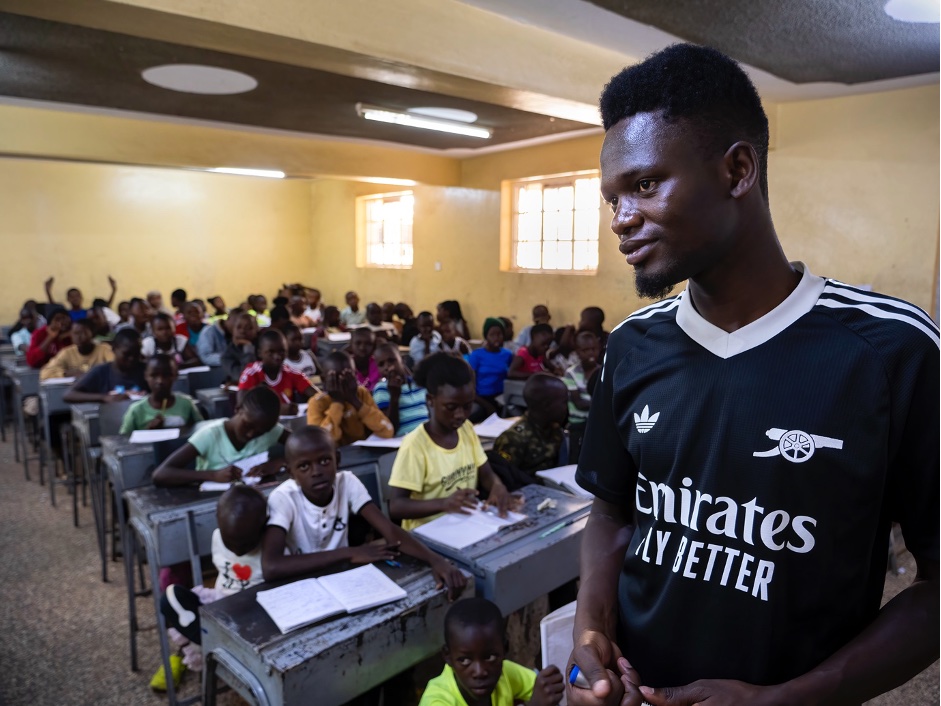
I couldn’t help feeling that back home in Australia, seventy children in a classroom would more than likely spell chaos – that’s if you could even convince them to show up voluntarily on a Saturday. But education here is a privilege, not a right, and these kids know it.
There’s still the cheekiness and energy you’d get with any group of children, but there’s also a profound appreciation for the education they’re receiving, and the organisation they’re receiving it from.
Talent Development
I was blown away by so much this month, from the dedication of the Ayiera Initiative to the resilience of the Korogocho community, but there was one thing that stood out to me above all else – the talent.
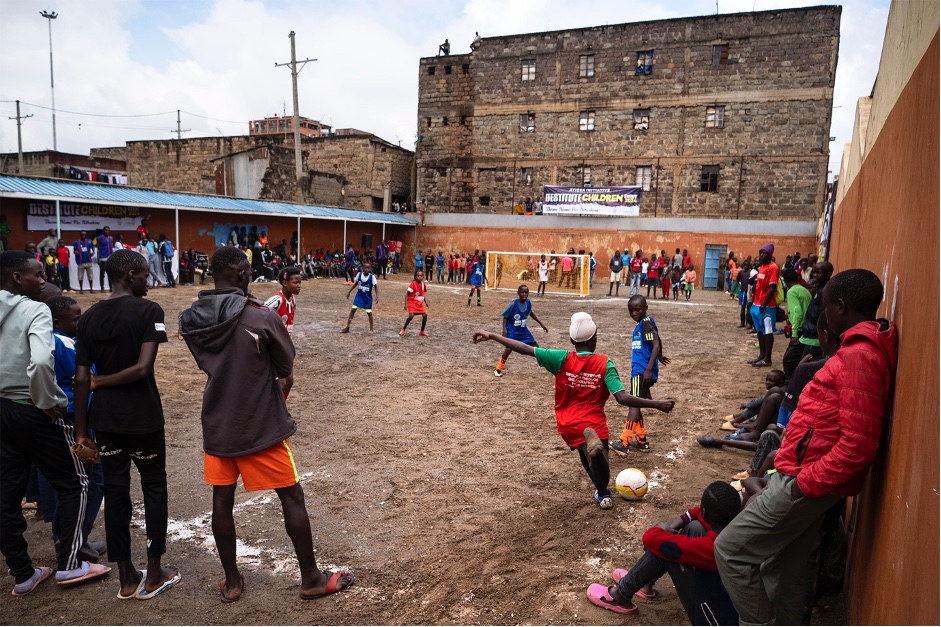
I can’t quite put into words how ridiculously talented these kids are. The quality of the football is mesmerising, the dance routines are exquisitely choreographed, and the artwork is deserving of its own exhibition – and that’s before you get into all the other programs that the Ayiera Initiative runs.
Last year, Kenya participated in the U17 FIFA Women’s World Cup for the first time, and two girls from the Ayiera Initiative were in the squad. Another former participant is representing the men’s national team. Others are professional musicians, TV presenters and founders of NGOs.
The kids of Korogocho are living in some of the most difficult conditions imaginable, and yet they throw themselves into whatever is in front of them with an unrivalled passion.
With its limited resources, the Ayiera Initiative has already lifted countless children out of poverty, and one can only imagine what they would be able to achieve if funding were not a challenge. As I explain at the end of the documentary, the Ayiera Initiative are in a particularly precarious financial position this year, and if you have the means, I would strongly encourage you to contribute to their work in any way you can.
You can donate to the organization via PayPal, and I hope you can help them continue transforming the lives of the kids in Korogocho slum.
